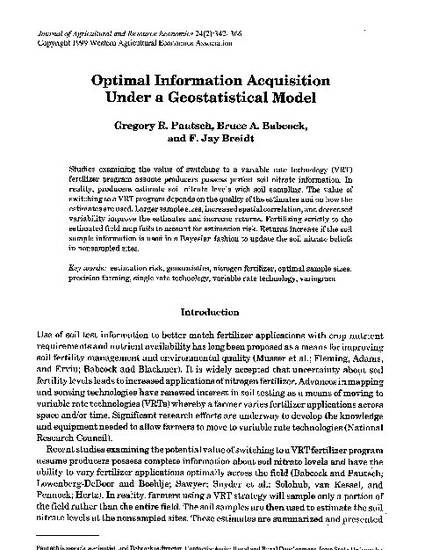
Article
Optimal Information Acquisition Under a Geostatistical Model
Journal of Agricultural and Resource Economics
Document Type
Article
Disciplines
Publication Version
Published Version
Publication Date
5-1-1999
Abstract
Studies examining the value of switching to a variable rate technology (VRT) fertilizer program assume producers possess perfect soil nitrate information. In reality, producers estimate soil nitrate levels with soil sampling. The value of switching to a VRT program depends on the quality of the estimates and on how the estimates are used. Larger sample sizes, increased spatial correlation, and decreased variability improve the estimates and increase returns. Fertilizing strictly to the estimated field map fails to account for estimation risk. Returns increase if the soil sample information is used in a Bayesian fashion to update the soil nitrate beliefs in nonsampled sites.
Copyright Owner
Western Agricultural Economics Association
Copyright Date
1999
Language
en
File Format
application/pdf
Citation Information
Gregory R. Pautsch, Bruce Babcock and F. Jay Breidt. "Optimal Information Acquisition Under a Geostatistical Model" Journal of Agricultural and Resource Economics Vol. 24 Iss. 2 (1999) p. 342 - 366 Available at: http://works.bepress.com/bruce-babcock/274/

This is an article from Journal of Agricultural and Resource Economics, 24(2) 1999; 342-366. Posted with permission.